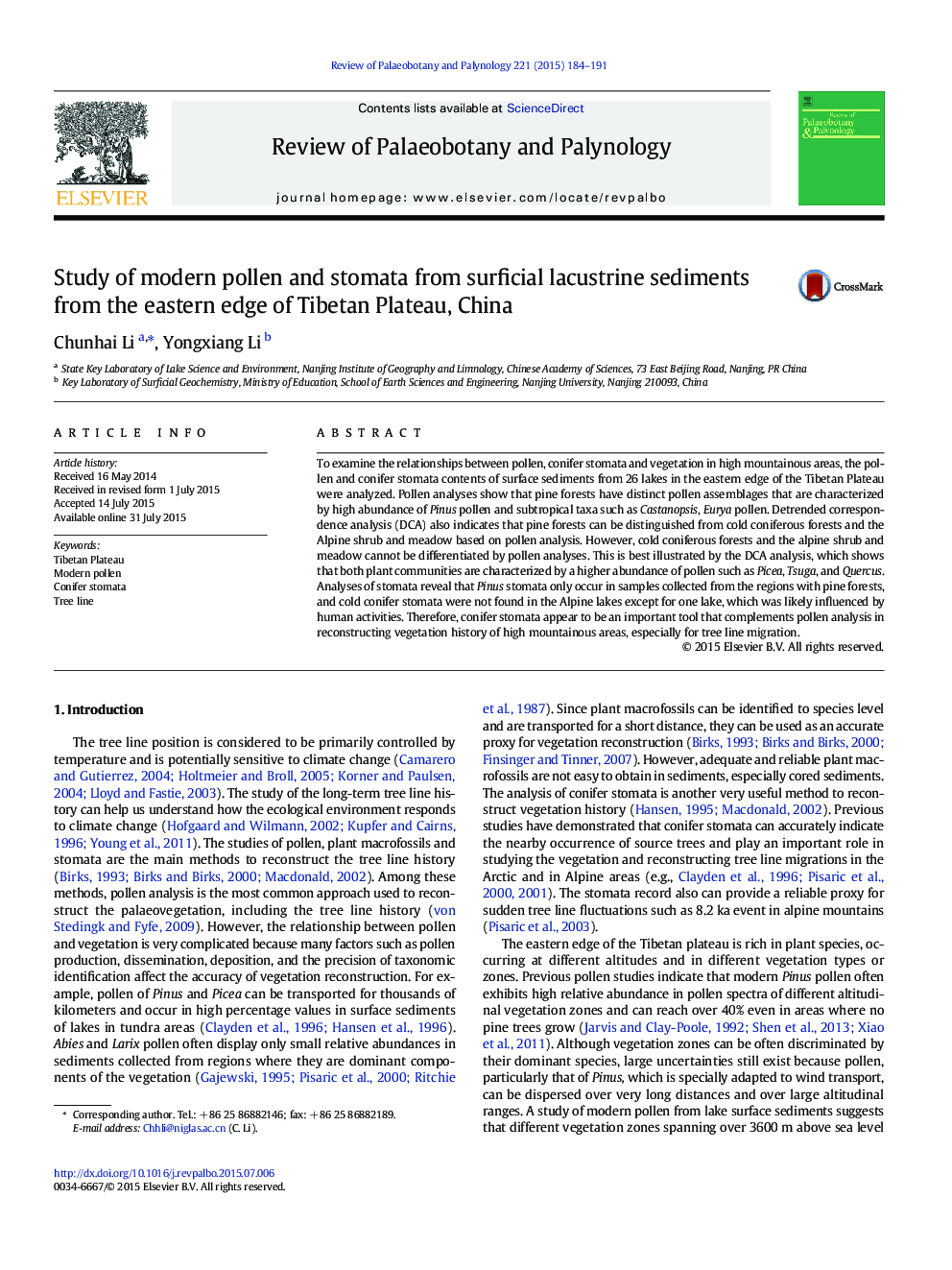| Article ID | Journal | Published Year | Pages | File Type |
|---|---|---|---|---|
| 6448708 | Review of Palaeobotany and Palynology | 2015 | 8 Pages |
â¢We test if conifer stomata can distinguish vertical vegetation zones in high mountain regions.â¢Vegetation types from high mountain areas cannot be distinguished by pollen spectraâ¢Conifer stomata can be used to distinguish vertical vegetation zones in high mountain areas.
To examine the relationships between pollen, conifer stomata and vegetation in high mountainous areas, the pollen and conifer stomata contents of surface sediments from 26 lakes in the eastern edge of the Tibetan Plateau were analyzed. Pollen analyses show that pine forests have distinct pollen assemblages that are characterized by high abundance of Pinus pollen and subtropical taxa such as Castanopsis, Eurya pollen. Detrended correspondence analysis (DCA) also indicates that pine forests can be distinguished from cold coniferous forests and the Alpine shrub and meadow based on pollen analysis. However, cold coniferous forests and the alpine shrub and meadow cannot be differentiated by pollen analyses. This is best illustrated by the DCA analysis, which shows that both plant communities are characterized by a higher abundance of pollen such as Picea, Tsuga, and Quercus. Analyses of stomata reveal that Pinus stomata only occur in samples collected from the regions with pine forests, and cold conifer stomata were not found in the Alpine lakes except for one lake, which was likely influenced by human activities. Therefore, conifer stomata appear to be an important tool that complements pollen analysis in reconstructing vegetation history of high mountainous areas, especially for tree line migration.
